Introduction
The anatomy of a paintbrush requires an understanding of its various components, including the bristles, ferrule, and handle.

- Importance of Understanding the Anatomy of a Paintbrush
- The Bristles: Types and Materials
- The Ferrule: Connecting the Bristles and Handle
- The Handle: Materials and Lengths
- Understanding Paintbrush Anatomy: Toe, Belly, Heel, and Crimp
- Choosing the Right Brush for Your Needs
- Tips for Buying Paintbrushes
- Summary
Importance of Understanding the Anatomy of a Paintbrush
The knowledge of paintbrush anatomy empowers artists to make informed decisions when selecting brushes for different painting techniques and styles.
Overview of the Different Components: Bristles, Ferrule, Handle
Each component plays a distinct role in determining how paint is applied to a surface, influencing texture, stroke width, and overall control.
Significance of Choosing the Right Brush for Artistic Needs
Matching the brush to specific artistic requirements enhances precision and expression in creating diverse visual effects and moods.
This understanding not only enhances technical proficiency but also opens up new creative possibilities for artists seeking to expand their repertoire.
The Bristles: Types and Materials
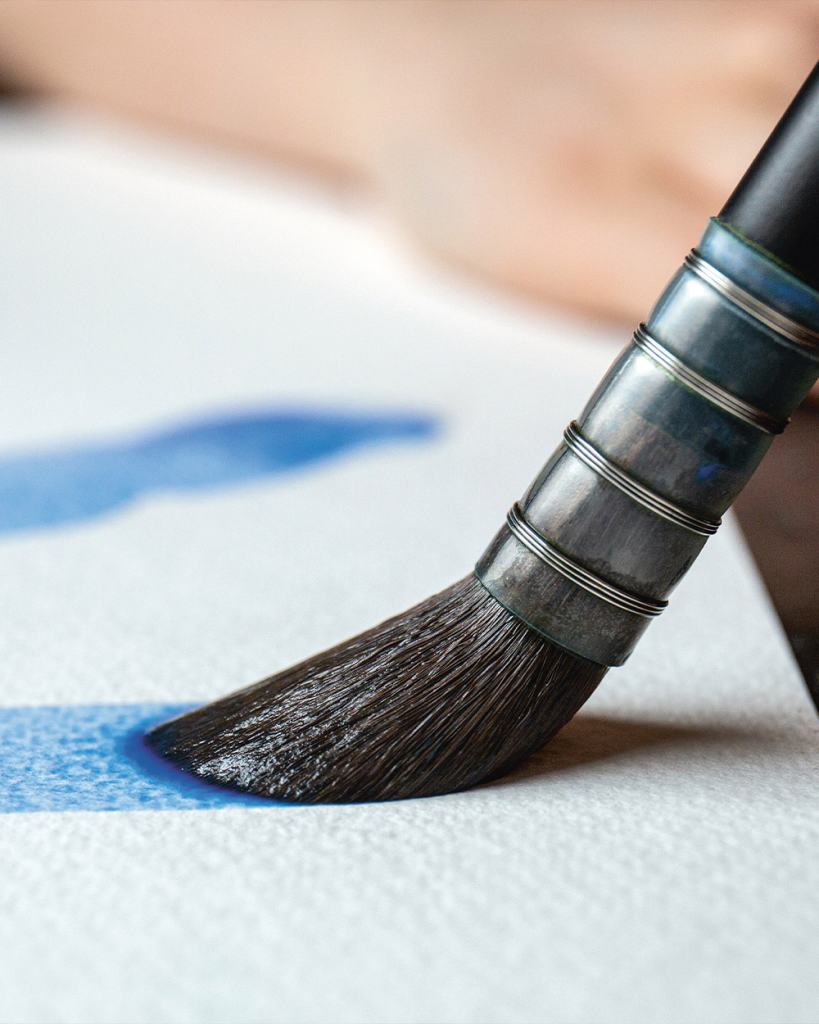
When it comes to paintbrushes, one of the most important components to consider is the bristles.
The type and material of the bristles greatly impact the performance and versatility of the brush.
Let’s take a closer look at the different bristle materials, their advantages, disadvantages, and the common hair types used in paintbrushes.
Natural Hair Bristles
Natural hair bristles are known for their excellent paint-holding capacity and smooth application. Here are some common types of natural hair used in paintbrushes:
- Sable: Sable hair is prized for its fine point and softness, making it ideal for delicate work and watercolor painting. It holds a good amount of paint and releases it smoothly onto the canvas.
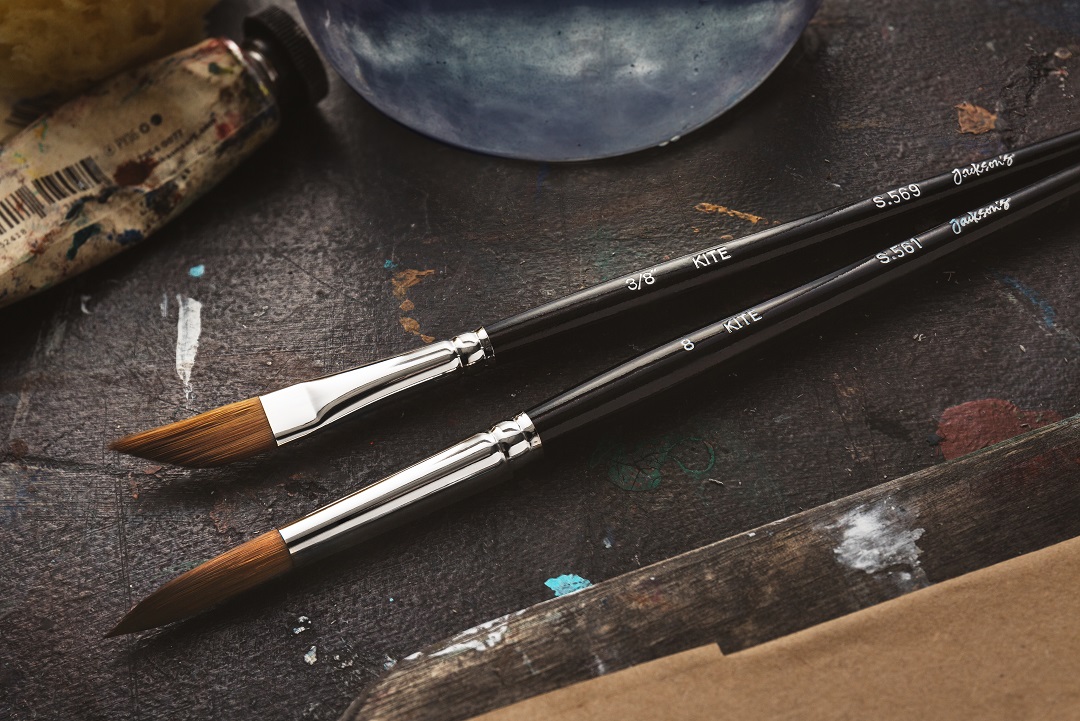
- Squirrel: Squirrel hair brushes are known for their incredible water-holding capacity, making them perfect for watercolor washes. They provide a soft and even application of color.

- Hog: Hog bristle brushes are stiff and durable, making them suitable for heavy body acrylics and oils. They can create bold strokes and texture due to their springiness.
While natural hair brushes have their merits, they also have some drawbacks:
- They tend to be more expensive compared to synthetic brushes.
- Natural hair brushes may not be suitable for vegan artists or those with allergies.
- They require extra care and maintenance to keep them in good condition.
Synthetic Hair Bristles

Synthetic bristles are made from materials like nylon, Taklon, or polyester. These brushes offer several advantages:
- They are more affordable than natural hair brushes.
- Synthetic brushes are suitable for both water-based media like acrylics and oils.
- They are versatile and can mimic the performance of natural hair brushes.
Here are some common synthetic brush types:
- Nylon: Nylon brushes are durable, resilient, and retain their shape well. They are suitable for a variety of techniques and can be used with both thin and thick paints.
- Taklon: Taklon brushes are known for their smoothness and excellent color absorption. They are often used for watercolors, gouache, and acrylics.
- Polyester: Polyester brushes are stiff and springy, making them great for heavy body acrylics and oils. They provide good control and precision.
Despite their advantages, synthetic brushes may have some limitations:
- They may not hold as much paint as natural hair brushes.
- Some artists find that synthetic brushes lack the same level of responsiveness as natural hair brushes.
Understanding the different bristle materials is crucial when choosing a paintbrush.
Natural hair brushes offer excellent paint-holding capacity but come at a higher cost.
Synthetic brushes, on the other hand, are more affordable and versatile. Ultimately, the choice between natural and synthetic bristles depends on your painting style, preferences, and budget.
The Ferrule: Connecting the Bristles and Handle

The ferrule is an essential component of a paintbrush as it serves the crucial function of connecting the bristles to the handle.
It is a metal band that holds the bristles tightly in place, ensuring a secure connection between the bristles and the handle. Understanding the importance of the ferrule and its materials can help artists choose a brush that suits their needs.
Function of the Ferrule
The primary function of the ferrule is to hold the bristles securely in place. It prevents them from coming loose or falling out during painting, providing stability and control. The ferrule also helps maintain the shape and structure of the brush, ensuring consistent performance over time.
Common Materials Used for Ferrules
Ferrules are typically made of metal, with aluminum and nickel-plated brass being common choices. Aluminum ferrules are lightweight and affordable, making them suitable for budget-friendly brushes.
Nickel-plated brass ferrules offer more durability and strength, making them ideal for brushes that will be used frequently or for heavy applications of paint.
Importance of a Secure Connection
A secure connection between the ferrule and handle is crucial for optimal brush performance.
If the connection is loose or weak, it can result in wobbling or instability while painting.
This can affect brush control and make it difficult to achieve precise strokes or details.
A well-attached ferrule ensures that the bristles remain firmly in place, allowing for smooth and consistent brushwork.
To ensure a secure connection, some brushes have a metal neck inserted into the handle before attaching the ferrule. This strengthens the bond between the ferrule and handle, reducing the risk of separation over time.
By understanding the function of the ferrule and its significance in brush performance, artists can make informed choices when selecting brushes for their artistic endeavors.
The Handle: Materials and Lengths

The handle of a paintbrush plays a crucial role in the artist’s comfort and control while painting.
It is important to choose the right handle material and length based on personal preference and the specific painting techniques being used.
Here are some key points to consider:
Different handle materials and their properties
Paintbrush handles can be made from various materials, with wood and acrylic being the most common options.
- Wood handles have been used for centuries and are favored by many artists for their natural feel and aesthetic appeal. Wood handles provide a solid grip and can absorb some of the shock from brushstrokes, making them comfortable to hold for extended periods. They also tend to be more durable than acrylic handles.

- Acrylic handles are a more recent development in paintbrush manufacturing. These handles are lightweight, smooth, and often have a contoured shape for ergonomic comfort. Acrylic handles are generally less expensive than wood handles and may be a preferred choice for artists who prioritize affordability or have specific health considerations, such as allergies to wood dust.
Here’s one from the one and only Prince Neptune set!
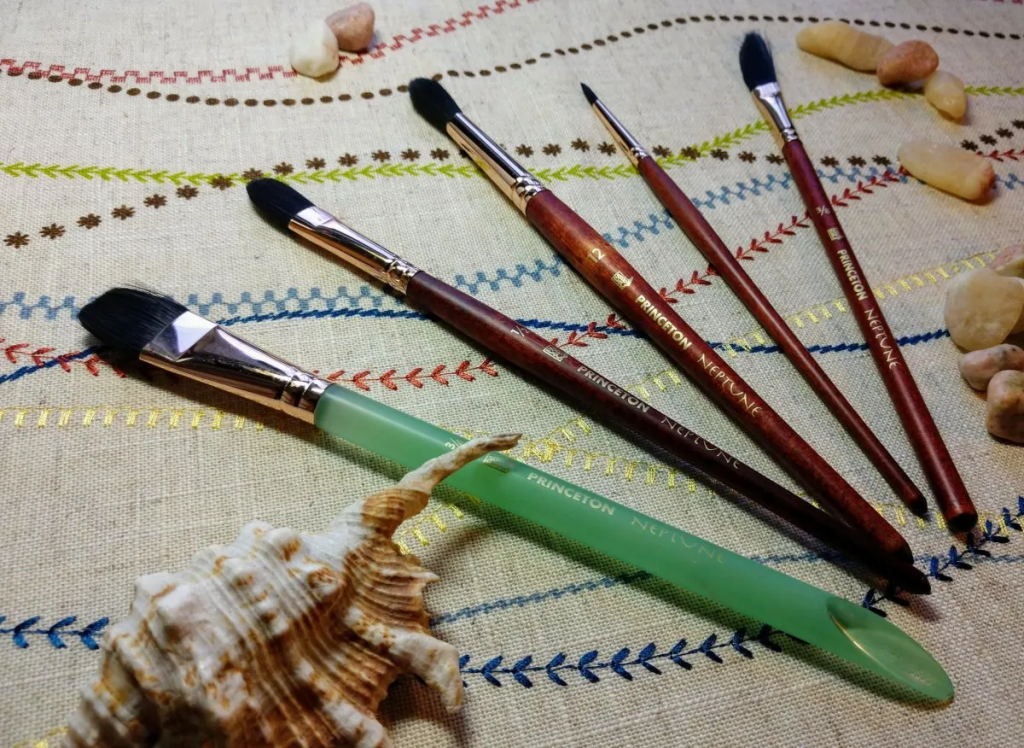
Impact of handle length on painting techniques
The length of the handle can significantly affect an artist’s control and technique while painting.
- Short-handled brushes are typically around 7 to 9 inches long and are commonly used for detail work, such as intricate line work or small-scale paintings. The shorter length allows for greater precision and maneuverability, making them ideal for artists who prefer working up close to their canvas or working on smaller surfaces.
- Long-handled brushes are usually between 12 to 14 inches long, with some specialty brushes even longer. These brushes are designed for working at a distance from the canvas or for larger-scale paintings. The extra length provides better reach and allows artists to step back from their work to assess their progress.
Choosing the right handle for comfort and control
Ultimately, the choice of handle material and length should prioritize the artist’s comfort and control while painting.
- Artists with larger hands or those who prefer a more substantial grip may find wood handles more comfortable to hold. The natural texture and weight of wood can provide a tactile connection between the artist’s hand and the brush.
- Artists who value lightweight tools or have specific ergonomic considerations may opt for acrylic handles. The smooth surface and contoured shapes of acrylic handles can reduce strain on the hand and wrist during long painting sessions.
When selecting a paintbrush, it is important to consider both the handle material and length in conjunction with other factors such as bristle type and ferrule quality.
Finding the right combination of these components will lead to a brush that feels balanced, comfortable, and responsive to the artist’s touch.
Understanding the different handle materials and lengths available can help artists make informed decisions when choosing paintbrushes that best suit their needs and preferences.
Experimenting with different handle options is essential to finding the perfect brush for each unique artistic style and technique.
Understanding Paintbrush Anatomy: Toe, Belly, Heel, and Crimp
In addition to the bristles, ferrule, and handle, there are specific areas of the bristles that play a significant role in the painting process.
These areas include the toe, belly, heel, and crimp.
The Toe
The toe refers to the very tip of the bristles. It is the part of the brush that comes into direct contact with the painting surface. The toe determines the precision and control an artist has over their brushwork. A pointed toe allows for fine details and delicate strokes, while a rounded toe is better suited for broader strokes and blending colors.

The Belly
The belly is the middle section of the bristles. It holds a substantial amount of paint and determines how much color can be applied with each stroke. A brush with a larger belly will hold more paint, making it suitable for covering larger areas quickly. On the other hand, a brush with a smaller belly is better for controlled application and intricate work.
The Heel
The heel is located near the ferrule and acts as a transition point between the belly and toe of the brush. It plays a crucial role in creating different brush marks and effects. By varying the pressure applied to the heel, artists can achieve variations in stroke width and texture.
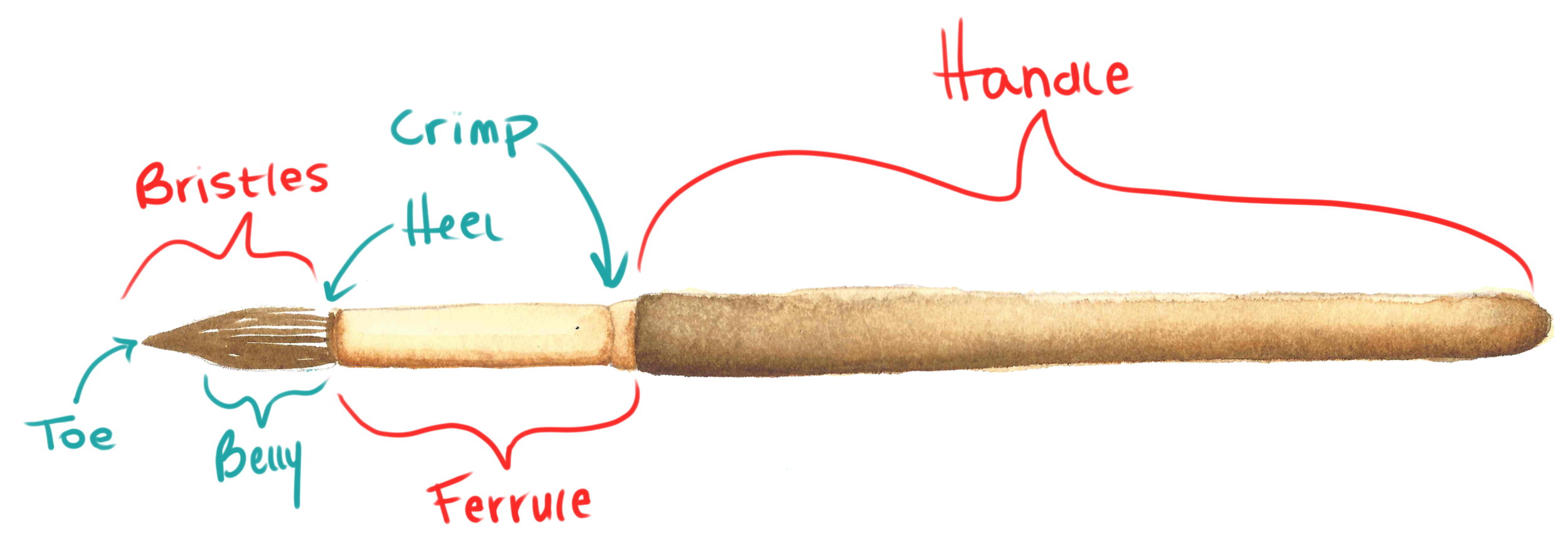
The Crimp
The crimp refers to the metal band that secures the bristles to the ferrule. A well-crimped ferrule ensures that the bristles are firmly held in place, preventing them from shedding or becoming loose during use. This not only contributes to brush durability but also ensures consistent performance over time.
Understanding these different parts of a paintbrush can help artists make informed decisions when selecting brushes for specific techniques or desired effects.
For example:
A brush with a fine point toe and a large belly would be suitable for detailed work with the ability to hold ample amounts of paint.
Conversely, a brush with a round toe and a smaller belly would be ideal for blending colors or creating soft edges.
Paying attention to the quality of the crimp is essential. A poorly crimped ferrule can lead to bristle loss and result in an inconsistent painting experience.
When purchasing a brush…
It’s important to examine the ferrule closely and ensure that it is securely attached to the handle.
By understanding the function of each part of a paintbrush – from the toe to the heel – artists can harness the full potential of their tools.
Experimenting with different brushes and exploring how these components interact can lead to new discoveries and techniques, ultimately enhancing artistic expression.
Remember:
Choosing the right brush involves considering factors such as hair type, ferrule material, handle material, and size. Each component contributes to the overall performance and versatility of the brush, enabling artists to achieve their desired results.
Choosing the Right Brush for Your Needs

When it comes to choosing the right paintbrush for your artistic needs, several factors come into play. From the types of paintbrush hair to the materials used for the ferrule and handle, each component contributes to the overall performance and suitability of the brush for a specific painting task.
Factors to Consider when Selecting a Brush
- Types of Paintbrush Hair: The type of hair used in a paintbrush greatly affects its performance. Natural hair brushes, such as sable, squirrel, or hog bristle, offer different painting experiences compared to synthetic brushes like nylon or Taklon. Consider the desired effect, texture, and medium compatibility when selecting the appropriate brush hair type.
- Ferrule Material: The material of the ferrule, usually metal, plays a crucial role in securing the bristles to the handle. A well-crimped ferrule ensures the longevity and durability of the brush. When choosing a brush, inspect the ferrule carefully to ensure it is tightly secured and free from defects that could affect its performance.
- Handle Material: The material of the handle can impact comfort and control during painting. Wooden handles provide a traditional feel and warmth, while acrylic handles offer durability and a smooth grip. Consider personal preferences alongside practical considerations when choosing between these materials.
Matching Brush Size to Painting Style and Surface Area
Selecting the right brush size is essential for achieving desired painting effects and maintaining control over details:
- Painting Style: Different painting styles require varying brush sizes. For broad washes and expressive strokes, larger brushes are suitable, while fine details and precision work may necessitate smaller brushes.
- Surface Area: The size of the surface being painted also dictates the appropriate brush size. Large canvases or expansive areas benefit from larger brushes to cover more ground efficiently, while smaller canvases or detailed work require smaller brushes for precision.
By carefully considering these factors, artists can select paintbrushes that align with their artistic vision and enhance their creative process.
Tips for Buying Paintbrushes

When it comes to buying paintbrushes, getting advice from experienced art teachers can be invaluable. Their expertise can guide you in making the right choices for your specific artistic needs. Here are some tips they might offer:
1. Tips for Ordering Art Supplies Online
When ordering paintbrushes online, consider the following tips:
- Read reviews and research the materials used in the brushes
- Look for detailed product descriptions
- Ensure that the online store has a good return policy in case the brushes don’t meet your expectations
2. Factors to Consider When Purchasing Brushes in Person
If you prefer to buy paintbrushes in person, here are some factors to consider:
- The weight and balance of the brush
- The comfort of the handle
- The quality of the bristles
- The construction of the ferrule to ensure that it securely holds the bristles
By seeking advice from art teachers, exploring online options, and considering key factors when purchasing brushes in person, you can make informed decisions that align with your artistic preferences and painting requirements.
Summary
As a painter, it is essential to understand the anatomy of a paintbrush and how each component contributes to your artistic process.
By familiarizing yourself with the bristles, ferrule, and handle, you can make informed decisions when selecting the right brush for your needs.
I encourage you to embrace experimentation with different brush types and materials. Manufacturers offer a wide range of series that cater to various artistic needs.
Don’t shy away from trying out synthetic brushes either; they offer versatility and durability that can be advantageous in certain applications.
Remember, as an artist, your tools are an extension of your creativity.
By understanding the anatomy of a paintbrush, you can make informed choices that will enhance your artistic journey.
Happy painting!

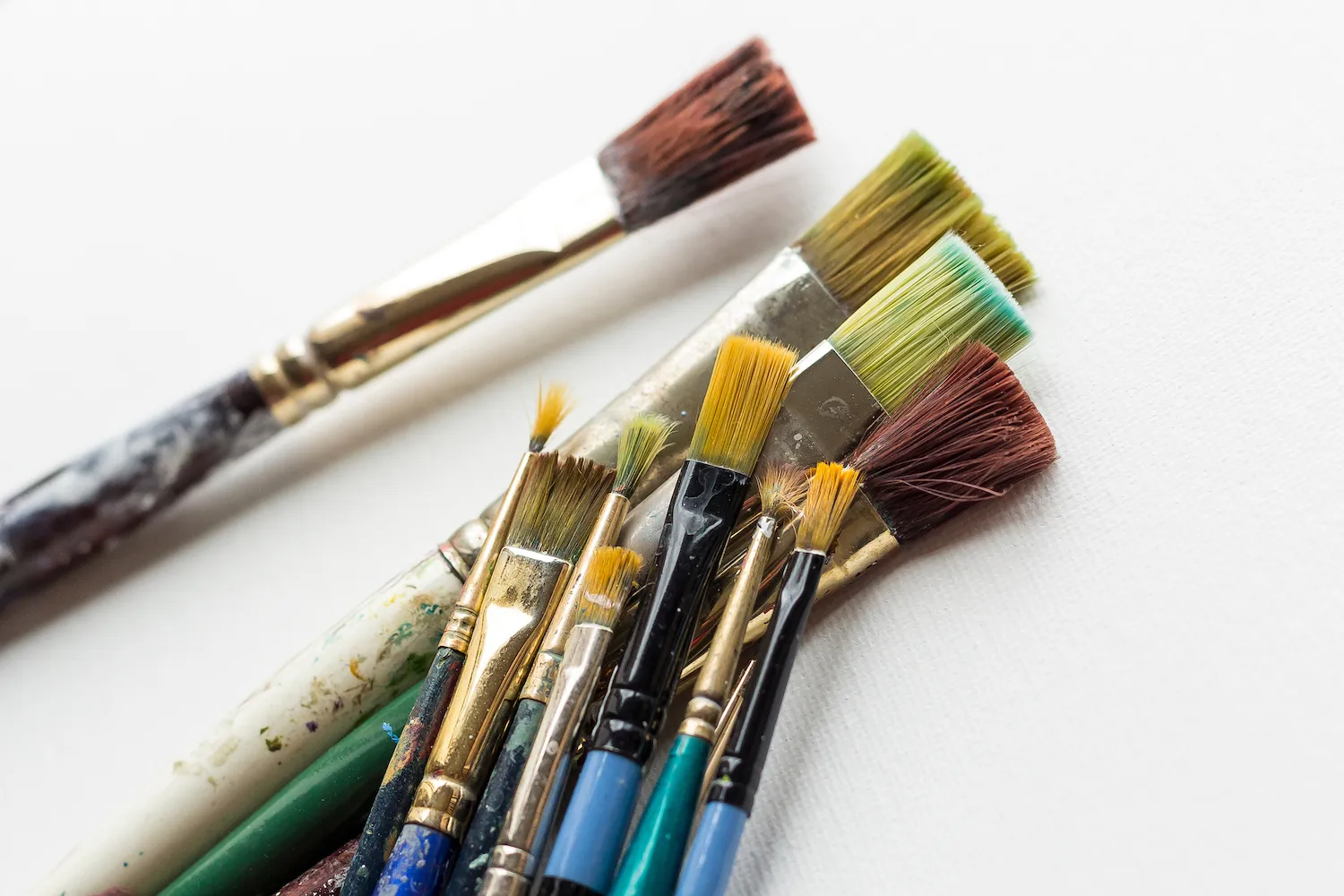

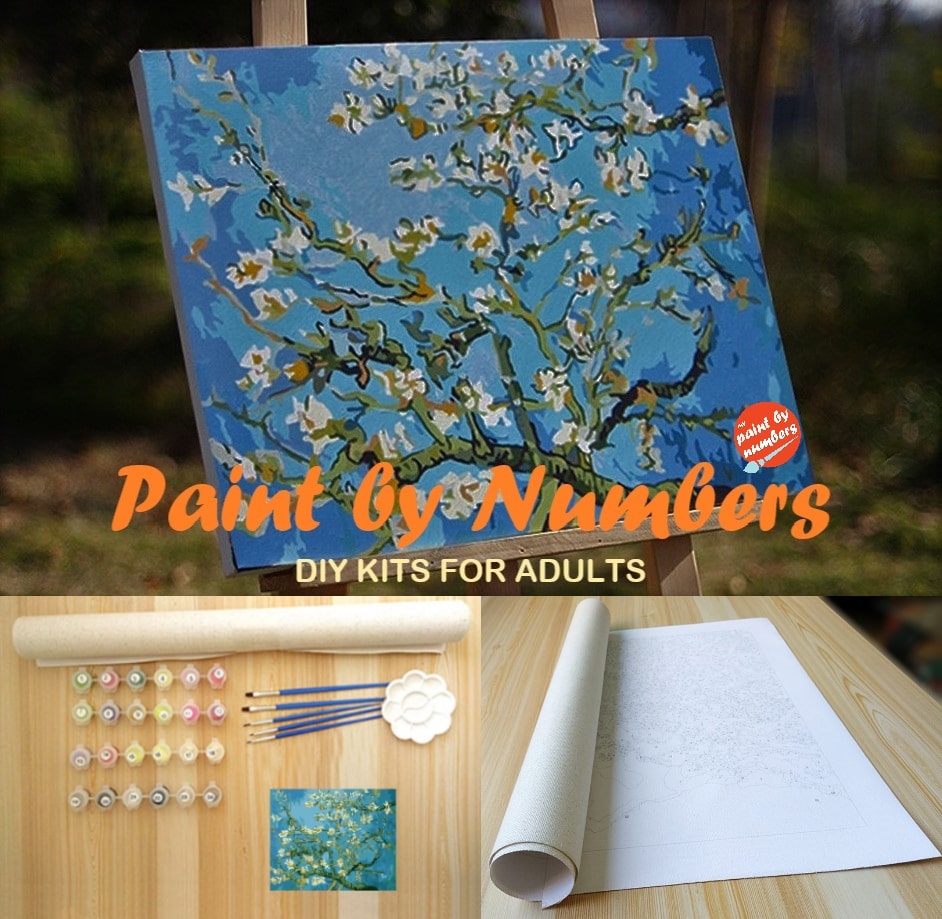
Leave a Reply